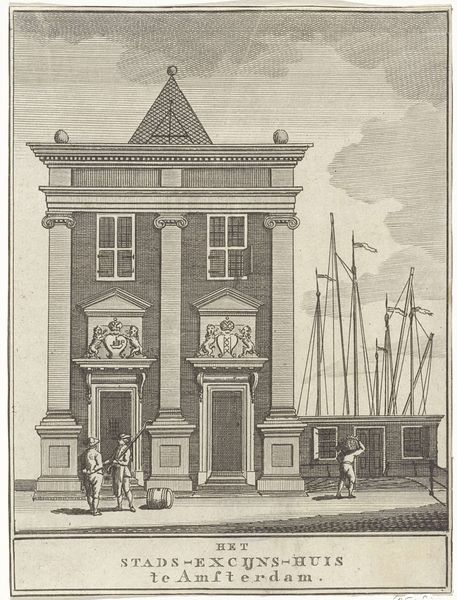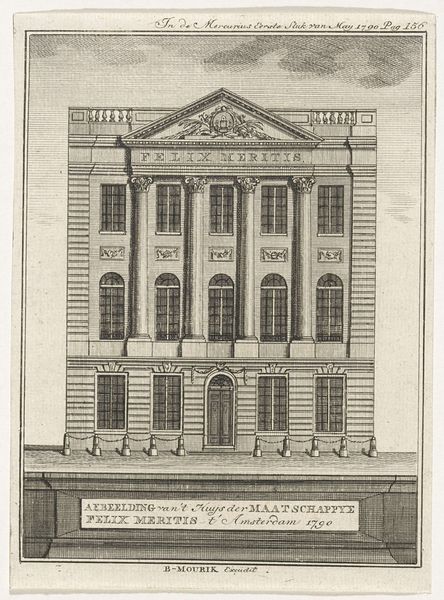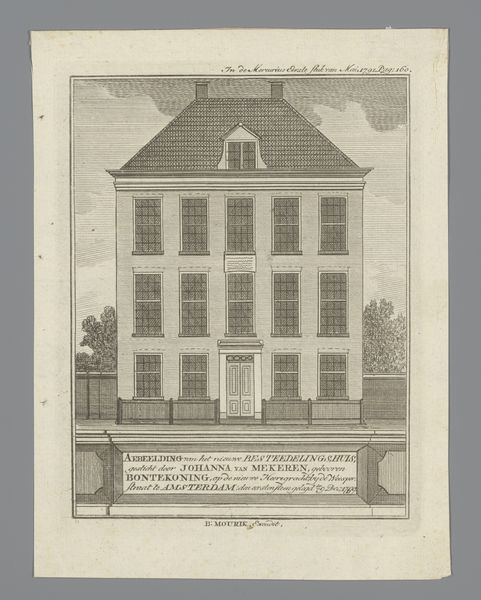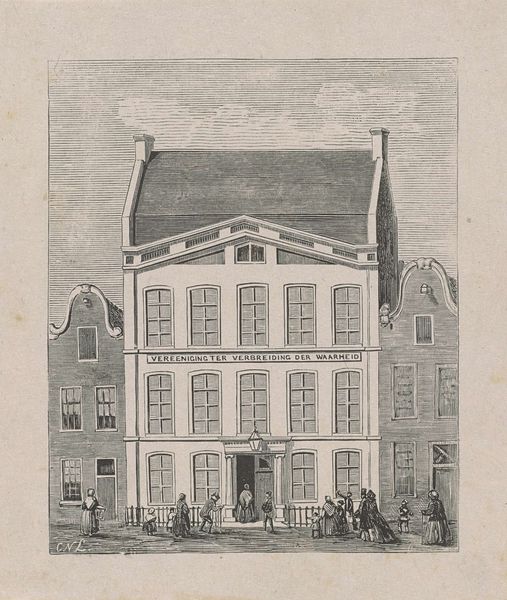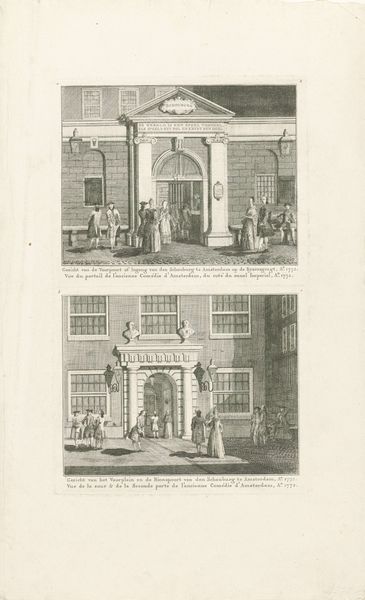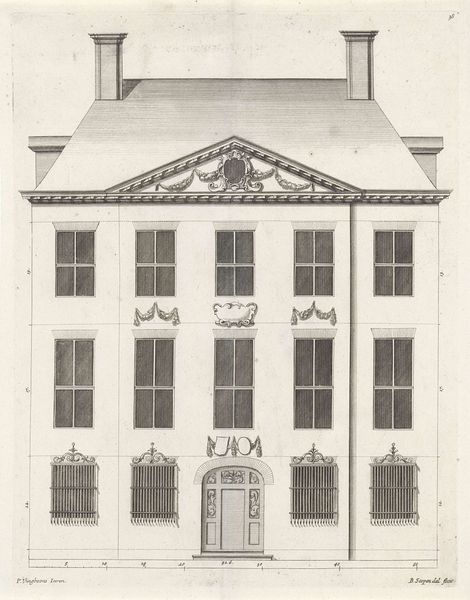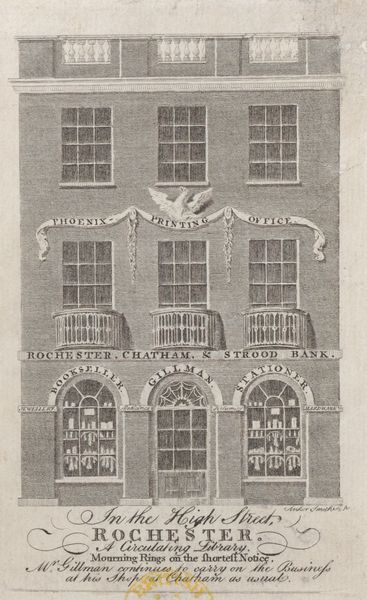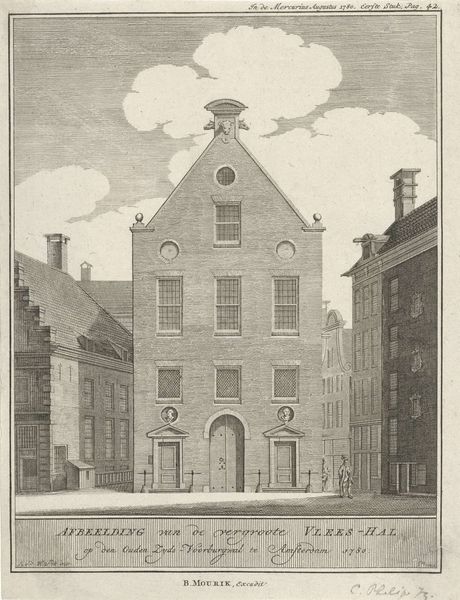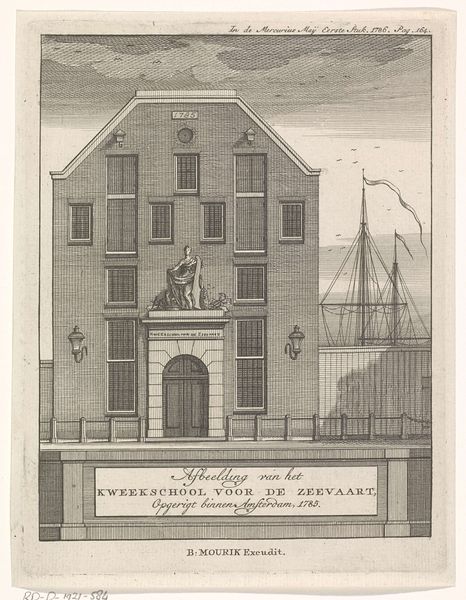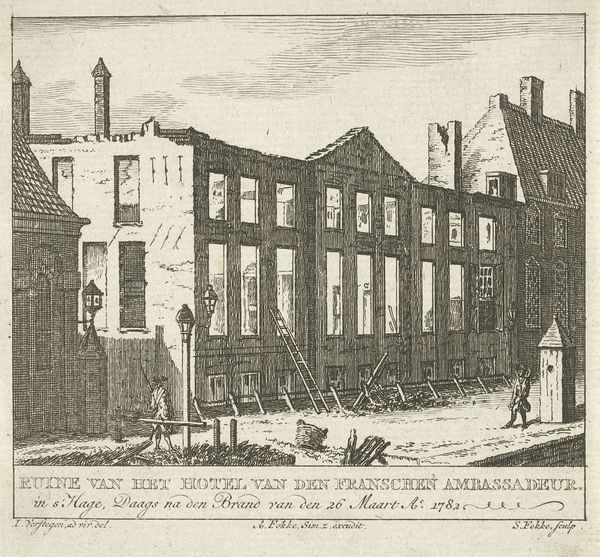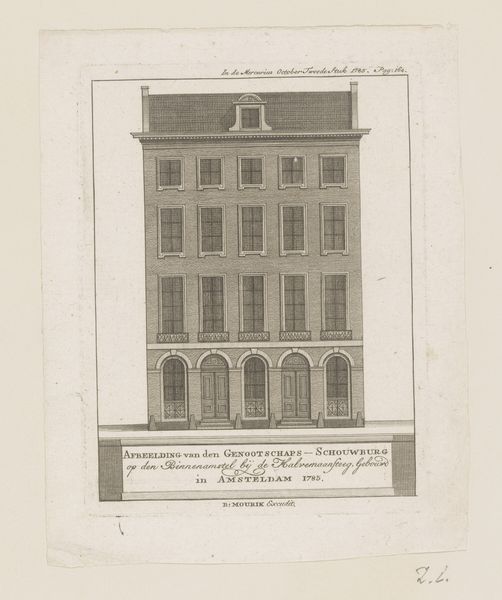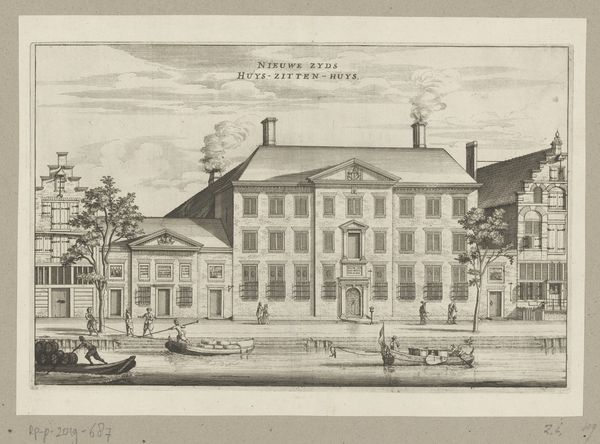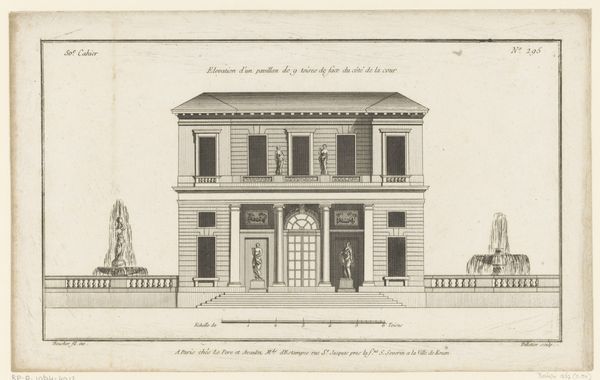
print, engraving, architecture
#
neoclacissism
#
dutch-golden-age
# print
#
cityscape
#
engraving
#
architecture
Dimensions: height 178 mm, width 139 mm
Copyright: Rijks Museum: Open Domain
Johan Christoffel Schultz made this print of the Sint Jozefs Gildehuis in Amsterdam, likely in 1794. It depicts the guild house, a symbol of social organization and economic power in the Dutch Republic. Guilds like Sint Jozefs played a crucial role regulating trade, maintaining standards, and providing social support for their members. The image creates meaning through its detailed depiction of the building’s architecture. The symmetrical façade, large windows, and decorative elements like the pediment with a sculpture, signify wealth, order, and civic pride. Made during a period of political and economic upheaval in the Netherlands, the print presents a self-consciously conservative image of established institutions. Understanding this print requires delving into the history of guilds, the economic structures of 18th-century Amsterdam, and the political context of the Dutch Republic. Primary sources such as guild records, period newspapers, and economic data, would help reveal the complex social conditions that shaped this artwork. The image shows us that art is not created in a vacuum, but is instead contingent on social and institutional context.
Comments
No comments
Be the first to comment and join the conversation on the ultimate creative platform.
